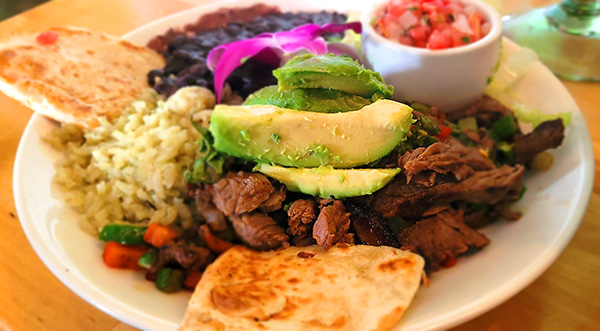Telegram vs WhatsApp: A Comprehensive Comparison of Features and Accessibility
By Space Coast Daily // May 1, 2025

In today’s hyper-connected world, messaging apps like Telegram and WhatsApp have revolutionized how we communicate. With billions of users globally, both platforms offer unique features tailored to personal, professional, and community needs. This article dives deep into their functionalities, security protocols, and accessibility—including how to use the Telegram Chinese version and log in to the WhatsApp web version—to help you decide which app suits your lifestyle.
Overview of Telegram: Security, Customization, and Global Reach
Telegram has emerged as a powerhouse for privacy-focused users, offering end-to-end encryption (E2EE) in its “Secret Chats” feature, cloud-based storage, and cross-platform compatibility. Its popularity stems from its flexibility, allowing users to send large files (up to 2GB), create groups with up to 200,000 members, and broadcast messages via channels.
Key Features of Telegram
- Secret Chats: Self-destructing messages with device-specific encryption.
- Bots and Integrations: Automate tasks, play games, or manage workflows.
- Customization: Themes, animated stickers, and editable chat backgrounds.
- Channels: Broadcast content to unlimited subscribers, ideal for news or communities.
Telegram’s open API also encourages third-party developers to build tools, enhancing its ecosystem.
Accessing the Telegram Chinese Version
While Telegram is banned in China due to strict internet regulations, users can access the Telegram Chinese version via VPNs (Virtual Private Networks). This version often includes localized language support and optimized servers for faster connectivity. However, it’s crucial to download Telegram only from official sources to avoid counterfeit apps. For Chinese-speaking users, Telegram’s interface can be switched to Simplified Chinese in settings, making navigation seamless.
WhatsApp: Simplicity, Ubiquity, and Business Integration
With over 2 billion users, WhatsApp dominates the messaging space thanks to its simplicity and E2EE across all chats. Owned by Meta, it integrates smoothly with Facebook and Instagram, offering features like Status updates, voice/video calls, and a dedicated Business app.
WhatsApp’s Standout Features
- End-to-End Encryption: Default protection for messages, calls, and files.
- WhatsApp Web: Access chats on desktops via the WhatsApp web version login.
- Status Updates: Share disappearing photos/videos with contacts, similar to Instagram Stories.
- Payment Services: Send money via linked bank accounts (available in select countries).
How to Use the WhatsApp Web Version Login
- Open web.whatsapp.com on your desktop browser.
- Launch WhatsApp on your phone, tap Menu > Linked Devices > Link a Device.
- Scan the QR code on the desktop screen.
- Your chats sync instantly, allowing seamless multitasking.
Note: Your phone must stay connected to the internet for WhatsApp Web to work. For added security, enable two-step verification and log out remotely if needed.
Telegram vs WhatsApp: Security and Privacy
Both apps prioritize security but approach it differently:
- Telegram: E2EE is optional (only in Secret Chats). Cloud chats are encrypted but stored on servers, enabling access from multiple devices.
- WhatsApp: E2EE is default for all communications, including group chats. Backups, however, are not encrypted unless stored on iOS iCloud or Google Drive with E2EE enabled.
Privacy advocates often favor Telegram for its anonymity features, such as usernames instead of phone numbers. WhatsApp requires a phone number for registration, linking it to your identity.
Accessibility and Regional Availability
- Telegram in Restricted Regions: In countries like China or Iran, the Telegram Chinese version relies on VPNs for access. Its censorship-resistant design makes it a favorite for free speech advocates.
- WhatsApp’s Global Reach: Available in over 180 countries, WhatsApp faces minimal restrictions except in regions like China, where it’s blocked.
Cross-Platform Functionality
- Telegram: Native apps for iOS, Android, Windows, macOS, and Linux. No need for a primary device—log in simultaneously on multiple platforms.
- WhatsApp: Mobile-first, with desktop access limited to browsers or standalone apps tied to your phone’s connection.
Which App Should You Choose?
- For Privacy and Large Communities: Telegram’s unlimited groups, channels, and optional E2EE make it ideal for influencers, educators, or activists.
- For Everyday Communication: WhatsApp’s simplicity, default encryption, and widespread adoption suit casual users and small businesses.
Conclusion
Telegram and WhatsApp cater to different audiences but excel in their niches. Whether you’re accessing the Telegram Chinese version via VPN or using the WhatsApp web version login for desktop convenience, both platforms empower users to stay connected securely. Evaluate your priorities—privacy, features, or ease of use—to pick the best fit for your digital life.
By understanding their strengths and limitations, you can harness these tools to communicate efficiently, no matter where you are in the world.












